Heritage Management and Conservation in India
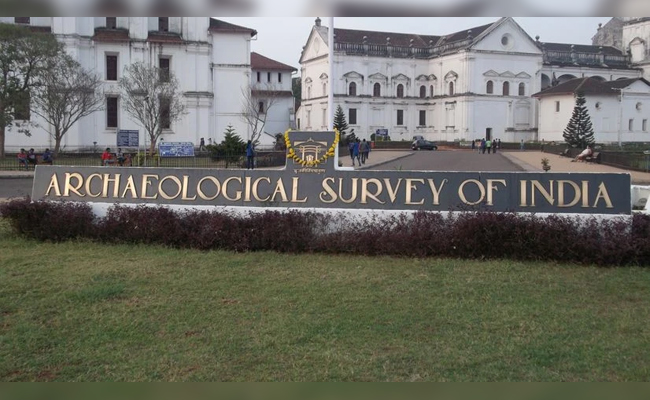
- 06 Oct 2025
In News:
- India’s rich cultural and architectural legacy, reflected in thousands of ancient monuments and archaeological sites, has long been under the stewardship of the Archaeological Survey of India (ASI).
- Established in 1861, the ASI functions under the Ministry of Culture and enforces the Ancient Monuments and Archaeological Sites and Remains Act, 1958, and the Antiquities and Art Treasures Act, 1972.
- However, with over 3,700 protected monuments under its care, the ASI’s capacity constraints have often resulted in delays and maintenance backlogs.
- Recognizing this challenge, the government has initiated a landmark policy shift to introduce public-private partnerships (PPP) in heritage conservation — marking a major reform in India’s cultural governance.
The Policy Shift
- For the first time, the core conservation of protected monuments will no longer be ASI’s exclusive domain. Under the new model, private players, corporates, and public sector undertakings can directly fund and implement conservation projects under ASI’s supervision. This move seeks to expand capacity, accelerate timelines, and leverage private expertise, while retaining strict professional and regulatory oversight.
- All projects will be monitored by the ASI and must comply with the National Policy for Conservation of Ancient Monuments, Archaeological Sites and Remains (2014). The initiative aims to balance modernization and preservation by fostering collaboration between government, industry, and civil society.
Institutional Framework and Implementation
- The reforms will operate through the National Culture Fund (NCF), established in 1996 with an initial government corpus of ?20 crore.
-
- The NCF enables donors to contribute directly to heritage projects and offers 100% CSR tax exemptions, incentivizing private participation.
-
- To ensure professional standards, the Ministry of Culture will empanel conservation architects of national repute, who will guide donors in planning and executing projects. The Detailed Project Reports (DPRs) will require ASI approval before implementation.
- Private donors, guided by these architects, can hire external implementing agencies experienced in restoring structures over 100 years old. Initially, a list of 250 monuments requiring urgent conservation will be released for donor selection.
Track Record of the National Culture Fund
Since its inception, the NCF has mobilized around ?140 crore in corporate and public donations, supporting over 100 conservation projects. Notable examples include:
- Bhuleshwar Temple (Pune),
- British Residency (Hyderabad),
- Group of Monuments at Mandu,
- Purana Qila and Red Fort site museums (New Delhi),
- Ongoing work at Vikramshila (Bihar), Deobaloda (Chhattisgarh), and Singorgarh Fort (Madhya Pradesh).
Significance and Safeguards
- The PPP model represents a shift from state monopoly to collaborative stewardship, ensuring accountability, transparency, and efficiency.
- The ASI retains its supervisory authority, maintaining consistency with India’s constitutional framework, where heritage conservation falls under both Union and State jurisdictions, as outlined in the Seventh Schedule and Article 253.
- Qualified conservation architects, empanelled through due diligence, will ensure technical integrity, while all financial contributions must pass through the NCF to prevent misuse. The government views this as a cautious, phased reform, initially assigning private players a supplementary role to test the model’s viability.
Comparison with Past Initiatives
Unlike the earlier ‘Adopt a Heritage’ scheme, which allowed corporates to develop tourist amenities such as cafes and restrooms as “monument mitras,” the current initiative extends to core conservation work. This marks a decisive evolution from heritage promotion to heritage preservation.
Conclusion
India’s new heritage management framework reflects a pragmatic blend of Aatmanirbhar Bharat, cultural preservation, and corporate participation. By integrating private sector efficiency with ASI’s institutional expertise, the model promises to make heritage conservation financially sustainable, technologically advanced, and socially participatory — ensuring that India’s timeless legacy endures through collective stewardship.
Documenting India’s Endangered Languages
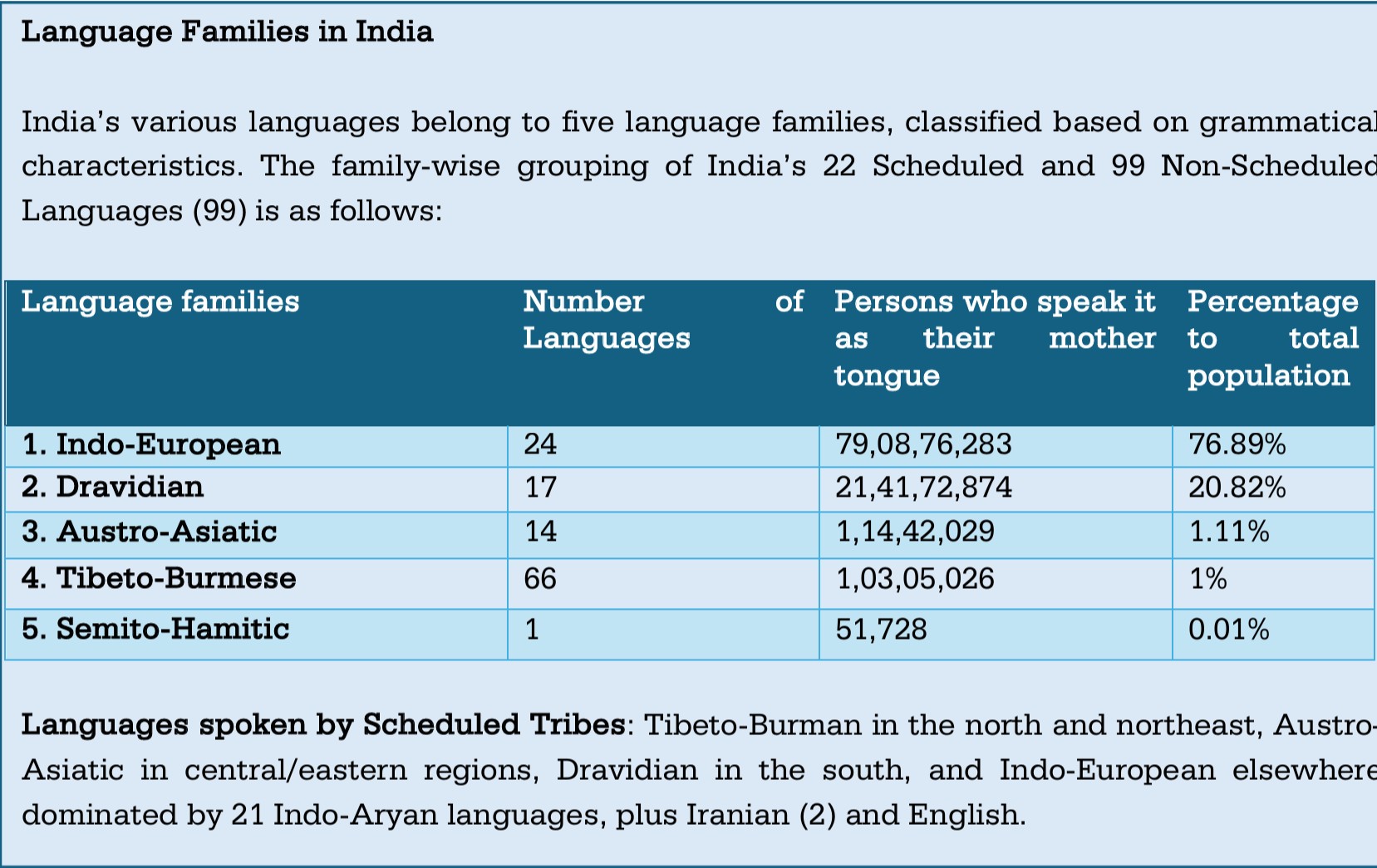
- 18 Aug 2025
Context:
India is home to one of the world’s richest linguistic landscapes, with the 2011 Census recording over 2,800 mother tongues, of which 1,369 were classified as recognized languages. However, many languages remain vulnerable: those spoken by fewer than 10,000 people are categorized as endangered.
According to the Scheme for Protection and Preservation of Endangered Languages (SPPEL) of the Central Institute of Indian Languages (CIIL), 117 endangered languages have been identified, and efforts are underway to document nearly 500 lesser-known languages in the future.
The Case of the Toda Tribe
The Toda tribe of the Nilgiri Hills in Tamil Nadu exemplifies India’s efforts at language preservation. Toda is a proto-South Dravidian language without a native script, spoken by only a few thousand people today. Traditionally oral, it encapsulates the community’s myths, rituals, and ecological knowledge. Under SPPEL, Toda elders have collaborated with linguists to record stories, songs, and vocabulary, producing primers in the Tamil script for schoolchildren and uploading digital archives to Sanchika, CIIL’s online repository launched in 2025. This initiative not only preserves linguistic material but also strengthens cultural identity.
Government and Institutional Efforts
SPPEL employs a systematic process of recording, transcription, grammar construction, cultural documentation, and digital archiving. Advanced tools—such as high-end audio-video equipment and linguistic analysis software—are used to create bilingual dictionaries, pictorial glossaries, and ethno-linguistic profiles.
Complementary schemes also support linguistic diversity. The Ministry of Tribal Affairs, through the TRI-ECE initiative, has funded AI-based translation tools to convert Hindi/English text into tribal languages. The Ministry of Culture promotes folk and tribal arts through programs such as the National Mission for Cultural Mapping and the Rashtriya Sanskriti Mahotsavs, while the Sahitya Akademi organizes annual tribal writers’ meets. These interventions align with the National Education Policy 2020, which emphasizes multilingual education.
Global Perspective
The erosion of linguistic diversity is not unique to India. UNESCO estimates that nearly half of the world’s 7,000 languages are endangered, with the loss of each language erasing irreplaceable cultural heritage. Recognizing this, UNESCO has declared 2022–2032 as the International Decade of Indigenous Languages, urging global stakeholders to act. The International Day of the World’s Indigenous Peoples (August 9) further highlights indigenous rights and cultural preservation.
Technology has emerged as both a challenge and a solution. While AI systems often appropriate indigenous knowledge without consent, initiatives such as New Zealand’s Te Hiku Media for M?ori and Polynesian reef conservation projects demonstrate AI’s potential for revitalization. In India, the integration of AI into language preservation efforts reflects this global trend.
Way Forward
Preserving endangered languages is critical for safeguarding traditional ecological knowledge, oral heritage, and cultural diversity. India’s multilingual character—where 22.9 crore people are bilingual and 8.6 crore are trilingual—creates opportunities for inclusive education models that protect minor languages while enabling wider communication. Community-driven documentation, AI-enabled tools, and government support can ensure continuity across generations.
As UNESCO Director-General Audrey Azoulay has noted, “Language is what makes us human. When people’s freedom to use their language is not guaranteed, this limits their freedom of thought and expression.” For India, the preservation of endangered languages is not merely cultural—it is a matter of equity, identity, and sustainable development.
National Handloom Day and the Legacy of the Swadeshi Movement
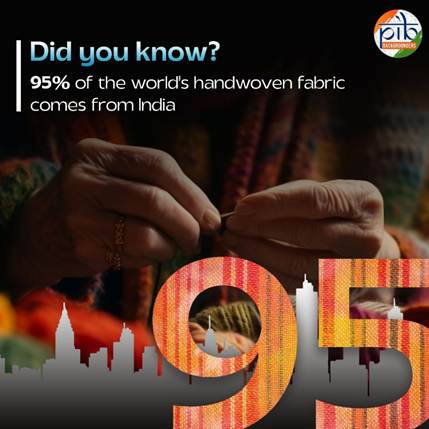
- 09 Aug 2025
In News:
Every year on 7th August, India celebrates National Handloom Day, commemorating the launch of the Swadeshi Movement (1905), which emerged as a response to the Partition of Bengal by Lord Curzon. The movement marked a turning point in India’s struggle for self-reliance by promoting indigenous industries, especially handlooms, as an instrument of economic resistance against colonial rule.
Historical Background: Swadeshi Movement
The Calcutta Townhall meeting of 1905 formally initiated the Swadeshi Movement. Its key methods included:
- Boycott of British goods like Manchester cloth and Liverpool salt, encouraging Indian-made products.
- National Education, leading to the founding of institutions such as Bengal National College and Bengal Technical Institute.
- Formation of Samitis, e.g., Swadesh Bandhab Samiti led by Ashwini Kumar Dutta.
- Use of festivals and cultural symbols, such as Raksha Bandhan by Rabindranath Tagore, to foster unity.
- Social reform agenda, linking Atma Shakti (self-strength) with campaigns against caste oppression, dowry, and alcoholism.
The movement evolved from a moderate phase led by Surendranath Banerjee to a radical phase under Lal-Bal-Pal, demanding Swaraj through boycott, passive resistance, and mass mobilization.
Impact
- Political: The 1906 INC session under DadabhaiNaoroji declared Swaraj as the ultimate goal. However, ideological differences caused the Surat split (1907).
- Economic: Boosted Indian industries like handloom and textiles, with enterprises such as Bengal Chemicals and Lakshmi Cotton Mills. Imports declined significantly between 1905–1908.
- Social & Cultural: Rabindranath Tagore composed Amar Sonar Bangla, later Bangladesh’s national anthem. Artists like Abanindranath Tagore infused nationalism into Indian art. Women actively boycotted foreign goods and promoted indigenous crafts.
- Administrative Response: Rising unrest compelled the British to annul the Partition of Bengal in 1911.
Contemporary Relevance
The ideals of Swadeshi find resonance in India’s current policies:
- Atmanirbhar Bharat Abhiyan (2020): Aims for self-reliance with a ?20 lakh crore stimulus (~10% of GDP). It emphasizes local for global and vocal for local.
- Make in India: Improved FDI inflows from USD 45 bn (2015) to USD 81.04 bn (2024–25). Exports reached USD 437 bn in 2024, including global dominance in pharmaceuticals and vaccine production.
- PLI Schemes: Covering 14 sectors to boost domestic manufacturing and exports.
- Revival of Khadi: KVIC reported a 347% rise in production and 447% rise in sales (2013–2025), generating employment for 1.94 crore people.
Role of Handloom Sector in India’s Economy
- Employment: Largest cottage industry employing 35 lakh workers, 72% of whom are women.
- Sustainability: Handloom products are eco-friendly and preserve cultural heritage.
- Exports: India contributes 95% of global handwoven fabric and exported USD 10.94 bn worth of cotton yarn, fabrics, and made-ups in FY23.
- Initiatives:
- National Handloom Development Programme (NHDP) for raw materials, design, and marketing.
- Raw Material Supply Scheme (RMSS): 15% yarn subsidy.
- Pradhan Mantri MUDRA Yojana (PMMY): Low-interest loans to weavers.
- Workshed Scheme: Financial aid for family-based weaving units.
- Geographical Indication (GI): 104 registered handloom products.
- GeM Platform: 1.8 lakh weavers onboarded for direct sales.
Conclusion
National Handloom Day is not merely a tribute to India’s textile heritage but also a reminder of the Swadeshi spirit of self-reliance, sustainability, and economic nationalism. From the fight against colonial exploitation to the vision of Atmanirbhar Bharat, the movement underscores the enduring power of indigenous industries in shaping India’s economic and cultural identity.
Jyotiba Phule: Pioneer of Social Justice and Emancipation
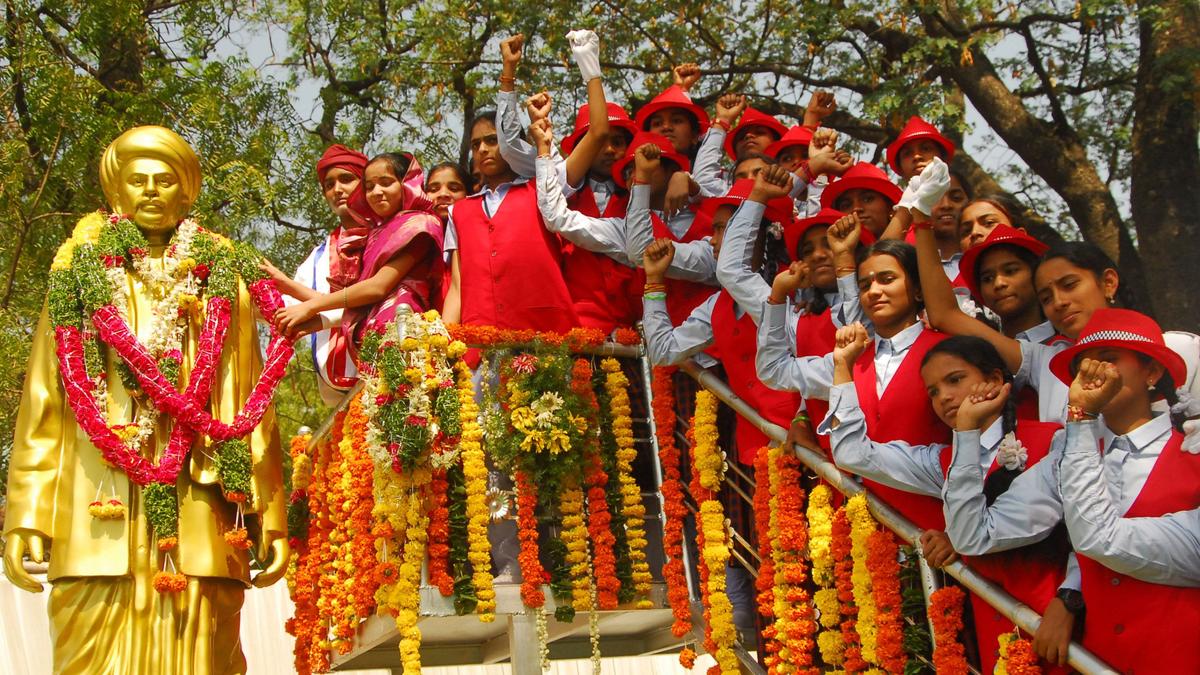
- 13 Apr 2025
Introduction:
Jyotiba Phule (1827–1890) stands out as one of the foremost social reformers of 19th-century India, whose contributions to education, caste reform, women's rights, and rationalist thought continue to influence contemporary debates on social justice.
Born into the Mali casteinMaharashtra, Phule’s awakening began in 1848 after facing caste-based humiliation at a Brahmin wedding. That same year, inspired by Cynthia Farrar (a Christian missionary) and rationalist Thomas Paine, he and his wife Savitribai Phule established India’s first school for girls. By 1851, they had opened 18 schools, and later, night schools for workers and women—challenging both gender and caste hierarchies in education.
Phule’s activism extended beyond education. In 1873, he founded the SatyashodhakSamaj (Society of Truth Seekers), an organization aimed at eradicating caste-based oppression and challenging Brahminical dominance. His work Gulamgiri (Slavery) (published in 1873) likened the condition of Dalits and Shudras to that of African-American slaves, emphasizing systemic subjugation through religious orthodoxy.
Phule argued for compulsory primary education, particularly for the rural poor. In his Statement to the Education Commission, he recommended scholarships, annual prizes, and mandatory schooling up to age 12, noting that agricultural poverty kept children away from education.
In his agrarian treatise ShetkaryancheAsud (Farmer’s Whip), Phule proposed:
- Employing army personnel in public works like dams and bunds.
- Returning village pasture lands from the Forest Department.
- Importing cattle for meat to preserve draught animals crucial to agriculture.
These proposals reflected his commitment to economic upliftment of farmers and sustainable agricultural practices.
Phule’s spiritual views evolved toward rational humanism. Though he respected the equality-based ethics in Islam and Christianity, his final philosophical work, Sarvajanik Satya Dharma Pustak, rejected all sectarian religious texts and called for a universal spiritual order. He questioned caste sanctity, ridiculed the notion of sacred superiority, and criticized the irrationalities in scriptural justifications.
He strongly supported women’s rights, defended PanditaRamabai’s conversion, and denounced polygamy, arguing for gender parity in both religious and social spheres. He wrote, “How would men feel if women married more than one man?”
Despite opposition from Bal Gangadhar Tilak and orthodox Hindu nationalists, Phule remained focused on uplifting the oppressed, even bailing Tilak out of jail at one point—illustrating his commitment to justice over personal differences.
Phule’s legacy remains crucial in modern India’s quest for social equity. His efforts to democratize education, dismantle caste, and promote inclusive governance laid the groundwork for India's later constitutional and social reforms.
Port Blair renamed as Sri Vijaya Puram
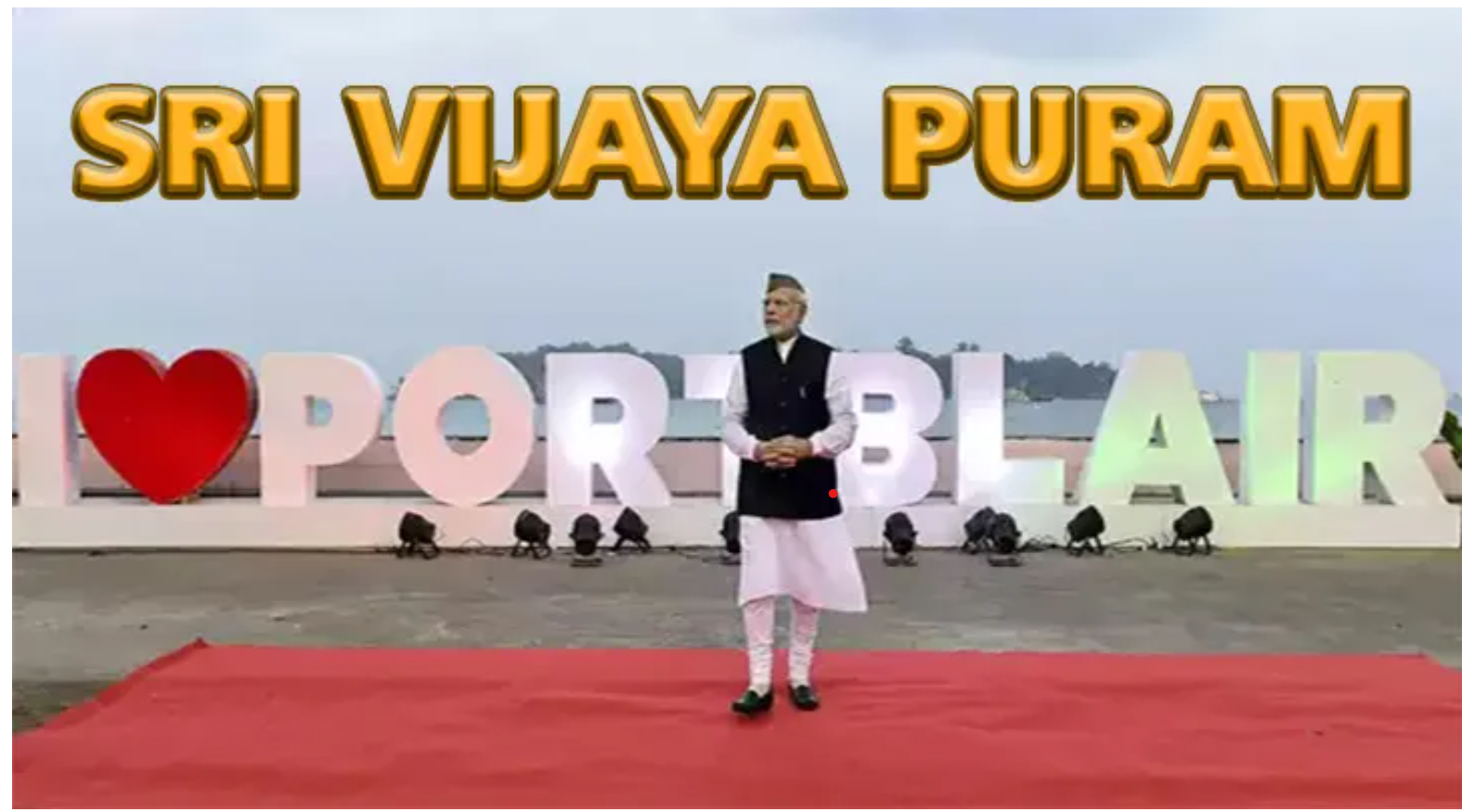
- 14 Sep 2024
Port Blair to be Renamed Sri Vijaya Puram: A Move to Erase Colonial Echoes
Union Home Minister Amit Shah announced on Friday that Port Blair, the capital city of the Andaman and Nicobar Islands, will be renamed Sri Vijaya Puram. This decision is part of a broader effort to “free the nation from colonial imprints,” Shah explained. In a post on X, he emphasized that while the current name carries colonial connotations, the new name, Sri Vijaya Puram, represents the triumph of India's freedom struggle and acknowledges the Andaman & Nicobar Islands’ pivotal role in that struggle.
Shah further highlighted the strategic importance of the islands, which historically served as a naval base for the Chola Empire and are now envisioned as a key element in India’s strategic and developmental plans. Port Blair, named after British naval surveyor Archibald Blair, will henceforth be known as Sri Vijaya Puram, aligning with Prime Minister Narendra Modi’s vision to remove colonial legacies.
The Origin of Port Blair’s Name
Port Blair, the gateway to the Andaman and Nicobar Islands, was named after Archibald Blair, a lieutenant in the Bombay Marine. Blair conducted a thorough survey of the islands after joining the Bombay Marine in 1771. His expedition, which began in December 1778, was crucial in mapping the Andaman Islands. Initially, Blair named the natural harbor Port Cornwallis, in honor of Commodore William Cornwallis. Later, the harbor was renamed Port Blair.
Blair’s survey was highly valued by the East India Company (EIC), leading to the islands’ colonization. The primary motivation was to create a secure harbor to monitor Malay pirates and provide refuge for shipwrecked individuals. Over time, the islands were established as a penal colony, receiving numerous convicts who performed forced labor.
In 1792, the EIC relocated the colony to Port Cornwallis, but it was soon abandoned due to disease and high mortality rates. The Revolt of 1857 brought an influx of prisoners, leading to the reestablishment of Port Blair as a penal colony. The harsh conditions led to numerous deaths, and the area became notorious for its brutal treatment of prisoners, including freedom fighters like Veer Damodar Savarkar. The infamous Cellular Jail, or Kaala Paani, was built by 1906 to house political prisoners.
Historical Significance of the Andaman Islands
Historical records indicate that the Andaman Islands were strategically significant during the 11th century, particularly for the Chola Empire under Emperor Rajendra I. The islands were used as a naval base in the Chola campaign against Srivijaya, a kingdom in present-day Indonesia. An inscription from Thanjavur dating to 1050 CE refers to the islands as Ma-Nakkavaram land, which may have influenced the modern name Nicobar.
Historian Herman Kulke, in his book "Nagapattinam to Suvarnadwipa," describes the Chola invasion of Srivijaya as a notable event, reflecting the complex interactions between India and Southeast Asia. Various scholars offer differing interpretations of the invasion, ranging from a response to trade disruptions to an extension of Chola expansionism.
In summary, the renaming of Port Blair to Sri Vijaya Puram represents a significant shift in recognizing the historical and strategic importance of the Andaman and Nicobar Islands, aligning with India's broader goals of addressing colonial legacies and honoring its rich history.
India-Maldives Relations Amidst Chinese Influence (Indian Express)
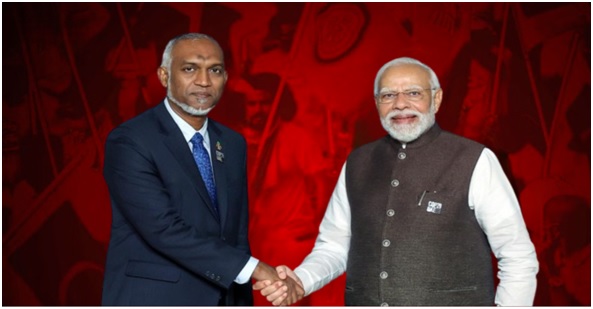
- 14 Oct 2023
Why is it in the News?
Following the recent presidential elections in Maldives, there are concerns about the potential impact on India-Maldives relations due to the 'India-Out' campaign led by President-elect Mohamed Muizzu.
Context:
- The recent election in Maldives resulted in the victory of a candidate perceived as Pro-China for the presidential role, sparking apprehensions for India.
- Maldives had a historical shift from an Executive Presidency system dating back to 1968 to a multi-party democracy in 2008.
- The absence of a re-elected incumbent president since 2008 is causing concern for India on this occasion.
Geographical Bonds Between India and Maldives:
- The Maldives is an archipelago spread across 90,000 square kilometres, predominantly comprising 99.6% of the ocean, leaving the remaining land scattered among over 1,200 islands.
- A concerning forecast by experts suggests that by 2050, 80% of the Maldives may face submersion due to the effects of 'Global Boiling.'
- In this geographical tapestry, India emerges as the closest neighbour, positioned just 70 nautical miles away.
- In times of crisis, it is India alone that stands as Maldives' immediate and unwavering ally.
- The profound words of Ibn Khaldun, the Tunisian philosopher, find resonance in the destiny woven by geography between these two nations.
- As he asserted, geography plays a pivotal role, and in the case of India and the Maldives, it s
How Has India Assisted the Maldives in the Past?:
- Essential Support and Communication Dependence: Historically, Maldives has leaned on India for essentials and communication, with India standing as a consistent and indispensable factor in the island nation's development.
- Even during the British protectorate years (1887-1965), Maldives relied on India for essentials and as a gateway to the outside world.
- State Bank of India's Role in Tourist Economy: India played a pivotal role in shaping Maldives' tourist economy, with the State Bank of India serving as a major financier in building the foundation of the country's tourism sector.
- This enduring support positions the State Bank of India as the largest bank in the Maldives to this day.
- Non-Interference in Internal Developments: Crucially, India has refrained from interfering in Maldives' internal affairs, offering support during critical moments such as the attempted coup in 1988 and subsequent assistance in various forms over the decades.
- The profound dependence of Maldives on India, coupled with India's unconditional support, has played a pivotal role in the island nation's emergence as the highest per capita country in South Asia.
- India's Prompt Response in Crises: During three major crises in 1988 (coup), 2004 (tsunami), and 2014 (water shortage), India emerged as the first responder, exemplifying its commitment to Maldives' well-being.
- Critical Role of Indian Professionals: In education and health, Indian teachers and doctors continue to play crucial roles, extending their influence even to remote inhabited islands.
- Strategic Defense Cooperation: The strategic defence cooperation between India and Maldives goes beyond material assistance, focusing on capacity building through joint exercises like Ekuverin and Ekatha, as well as collaboration in surveillance assets, training 1,400 MNDF trainers in recent years, and disaster management efforts.
What is the Current Situation of India-Maldives Bilateral Relations?
- India stands as the predominant partner in various sectors, be it trade or tourism.
- Demonstrating commitment to elevating Maldives' infrastructure, India is actively engaged in projects such as enhancing connectivity in Greater Male.
- India plays a vital role in supplying a diverse range of essential commodities in bulk, including rice, wheat flour, sugar, potatoes, onions, eggs, vegetables, and even special dispensations like river sand and construction materials.
India's Strategic Interests in Maldives:
- Strategic Significance: Maldives holds paramount importance for India as a primary line of defense against various threats, including terrorism, piracy, drug trafficking, narcotics, and maritime crimes.
- Geographically, Maldives is strategically positioned merely 70 nautical miles from Minicoy and 300 nautical miles from India's West coast.
- It serves as a pivotal point within the commercial sea lanes traversing the Indian Ocean.
- Geo-Political Alignment: India's interests in Maldives align on various fronts, encompassing:
- Securing sea lanes of communication.
- Combating piracy and sea-based terrorism.
- Transforming the Indian Ocean into a conflict-free zone, restoring its status as a peaceful maritime region.
- Exploring the potential of the blue economy and enhancing trade relations.
- Internal Security Concerns: Maldives' proximity and shared maritime borders have direct implications for India's internal security.
- The upsurge in Maldivians joining terrorist groups, such as the Islamic State (IS), poses a significant challenge.
- Political instability and socio-economic uncertainties contribute to the growth of Islamist radicalism, raising concerns about the potential use of remote Maldivian islands as launch pads for terror attacks against India and its interests.
What are the Challenges to India-Maldives Bilateral Relations?
- Rising Islamic Radicalization: The Maldives has witnessed an alarming increase in per capita numbers of individuals joining foreign terrorist groups in Syria and Iraq.
- A 2020 report by the European Foundation for South Asian Studies highlights the challenge of growing Islamic radicalization among the Maldivian population.
- India Out Campaign: The India Out campaign, supported by Maldives' opposition leader Abdulla Yameen and the newly elected president, projects a sceptical view of India's investments and defence partnerships.
- Allegations include concerns about compromising the sovereignty of the island nation by allowing Indian military presence, fostering a negative sentiment towards India's role as a net-security provider.
- The China Factor: China's engagement in the region is perceived as self-serving, characterized by debt financing leading to potential debt traps and China's expanding influence.
- Concerns arise over China's interference in Maldives' internal politics and support for conservative elements, posing a threat to the development of a vibrant democracy.
- There are apprehensions that elements aligning with China may perpetuate a legacy of controlled regimes from the Gayoom era, potentially compromising the nation's long-term interests.
Way Ahead for India-Maldives Relations: Detrimental Effects of Anti-India Campaigns
- India remains steadfast in its commitments to the Maldives, consistently investing in efforts to strengthen bilateral relations.
- Any hasty attempts to unravel this carefully nurtured partnership are poised to inflict more harm on the Maldives than on India itself.
- A telling example is the 2012 'GMR out' campaign, which cost Maldives a substantial $270 million payout to GMR.
- The Yameen era, marked by a pro-China policy, plunged Maldives into a debt crisis, underscoring the potential pitfalls of such geopolitical shifts.
Conclusion
Throughout the decades, India has been a reliable source of security assistance for Maldives, extending a hand of friendship and trust. It is anticipated that the newly elected President Muizzu will likely refrain from taking drastic measures that could alter the fabric of relations with India. While elections are often driven by emotions and promises, the pragmatic realities of governance may lead him to recognize the potential repercussions of undermining the longstanding ties with India.
